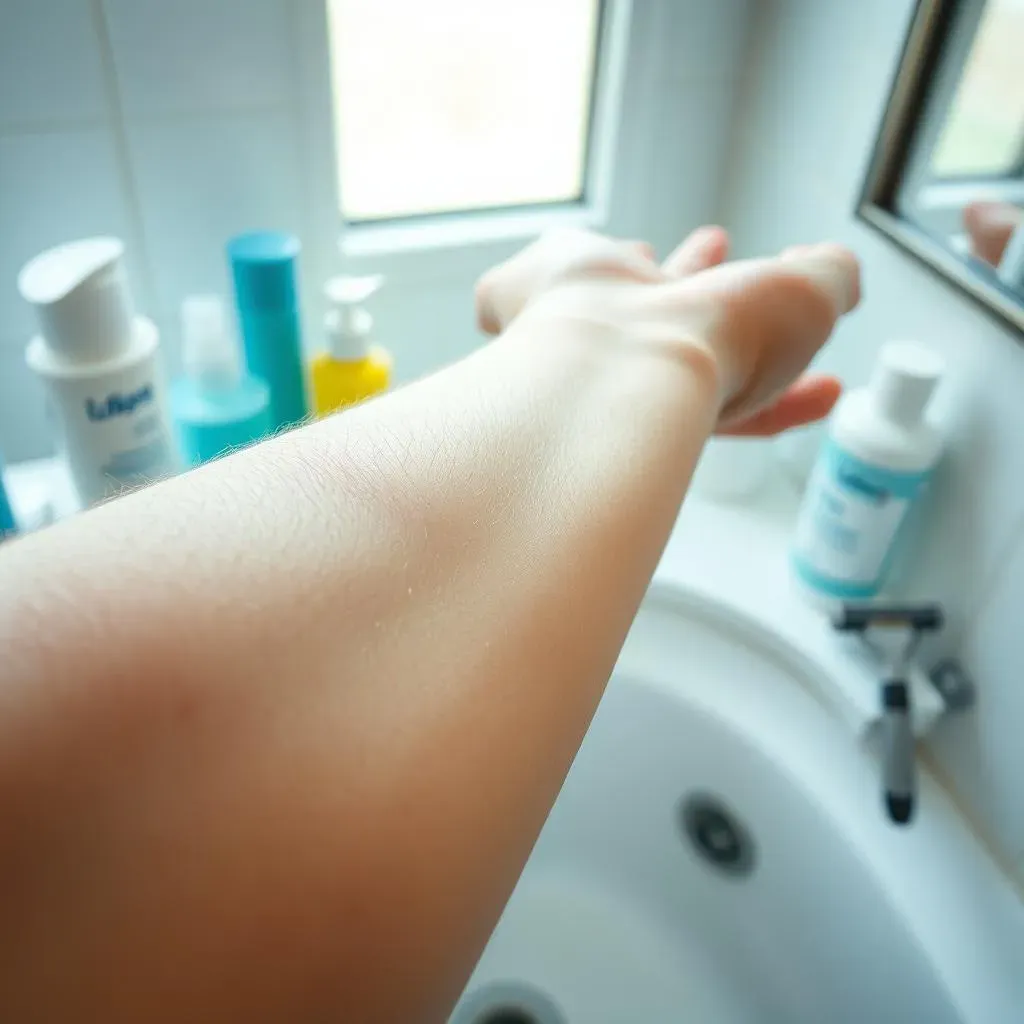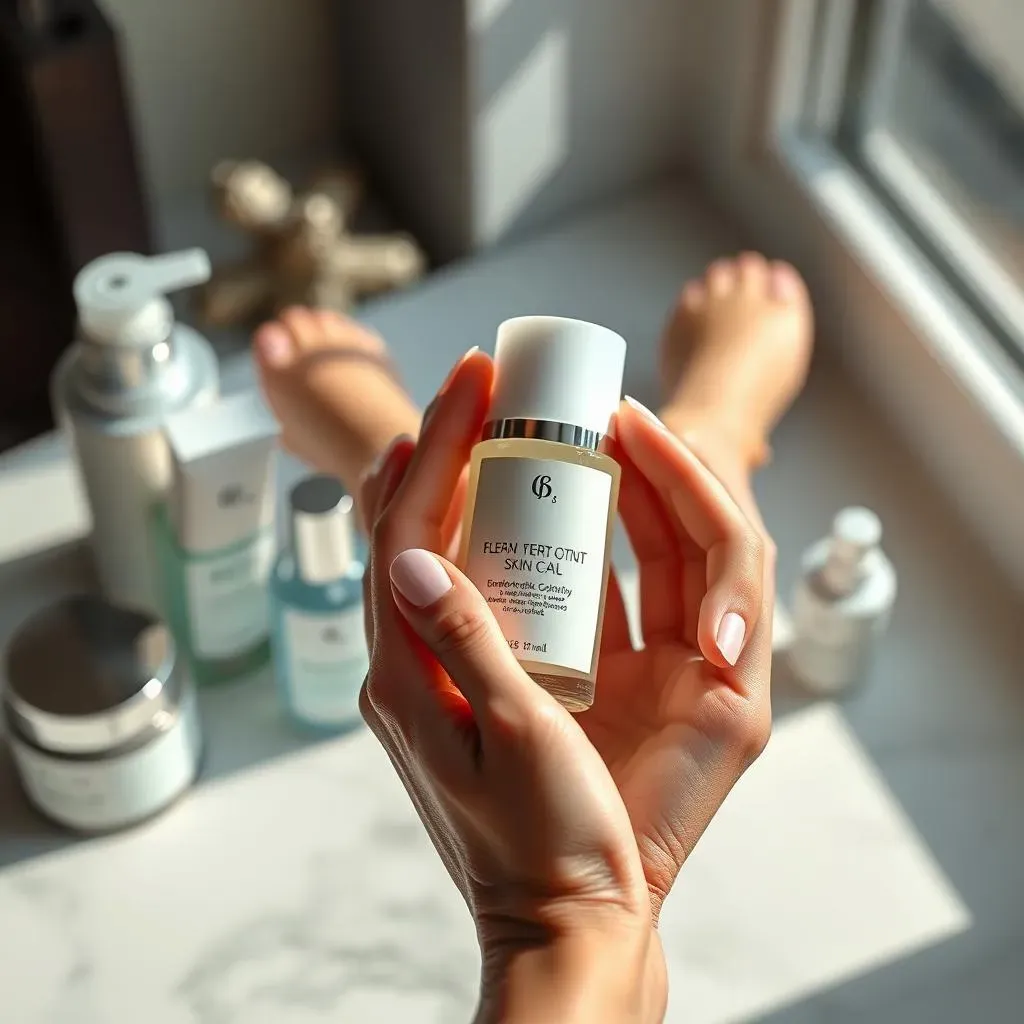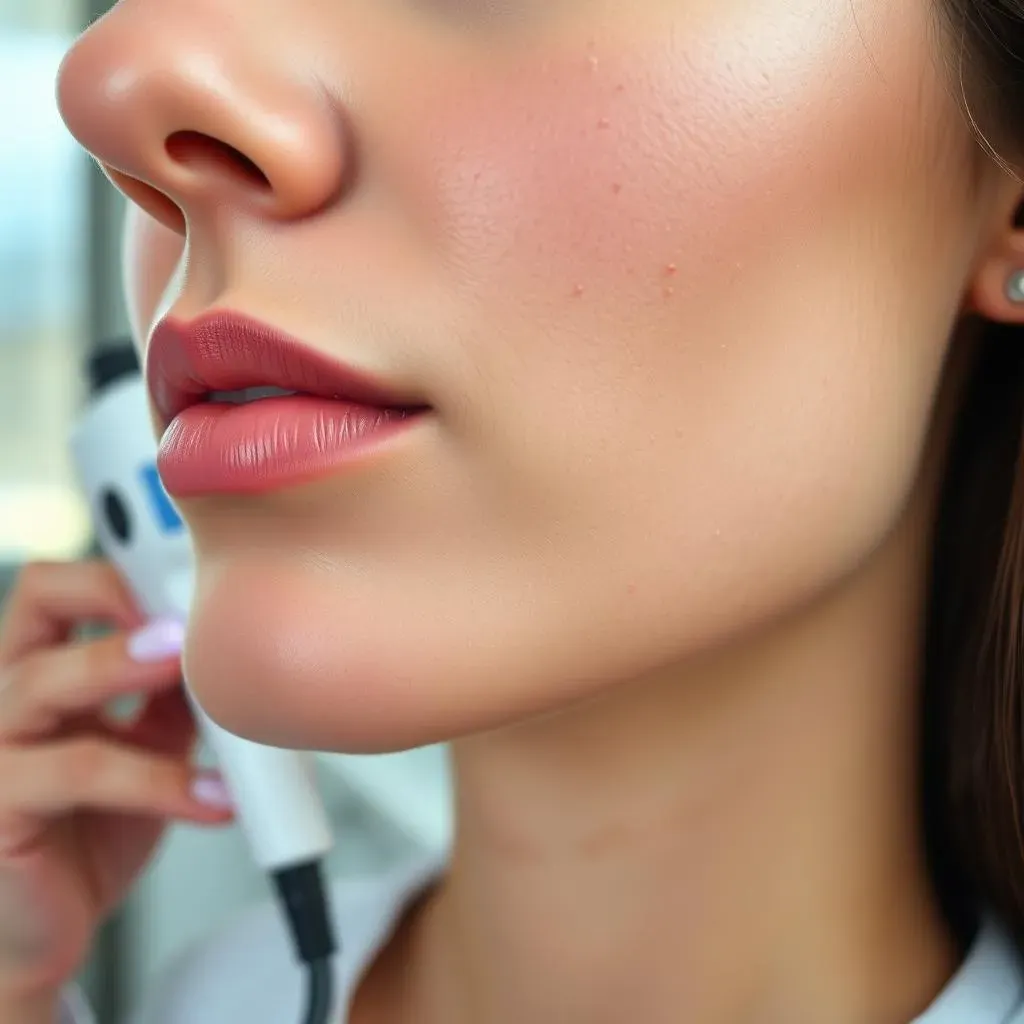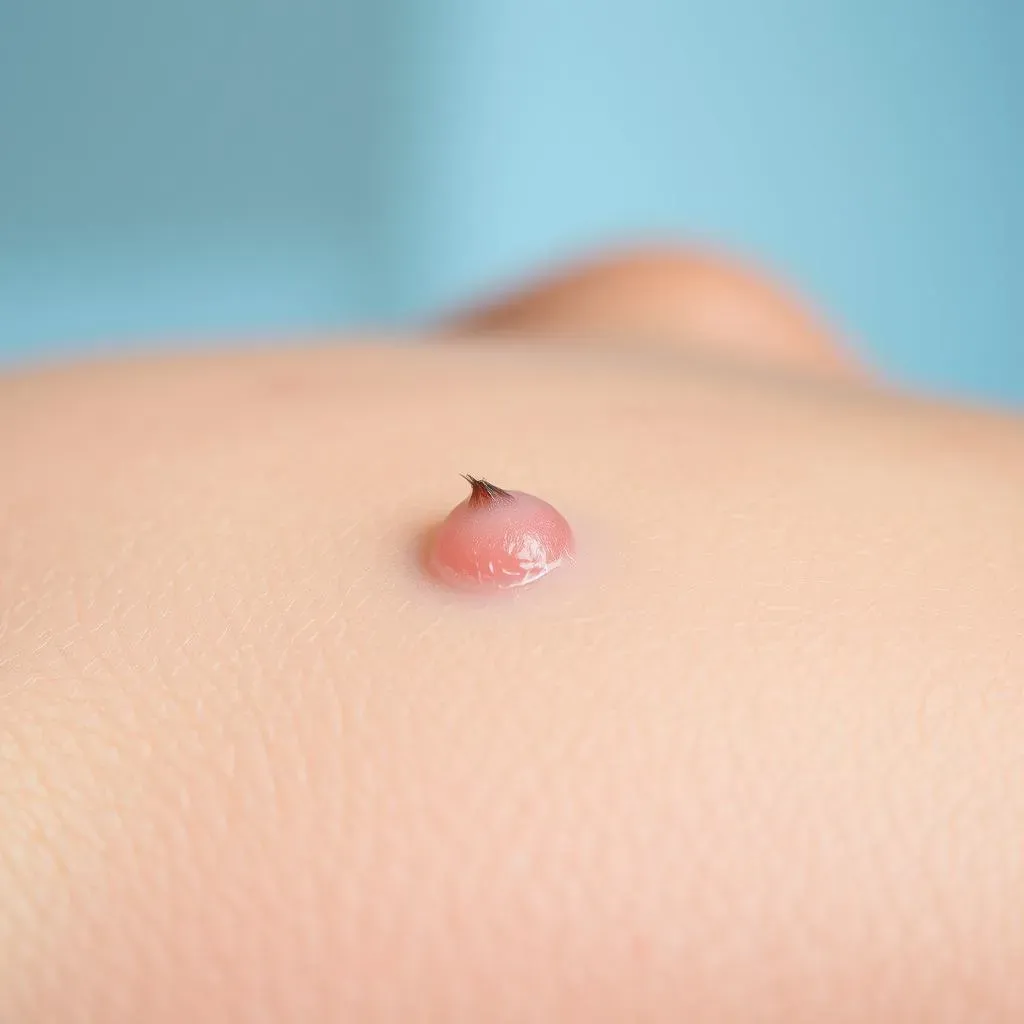Table of Contents
Ingrown hairs can be a frustrating and painful problem for many, causing redness, inflammation, and discomfort. If you're tired of dealing with these pesky bumps and are looking for the best ingrown hair removal methods, you're in the right place. In this article, we'll delve into the world of ingrown hair, exploring its causes, prevention strategies, and the most effective treatments. From expert-recommended products to advanced solutions like laser hair removal, we'll cover it all. Our goal is to provide you with a comprehensive guide to achieving smooth, ingrown hair-free skin. Whether you're struggling with ingrown hairs on your face, neck, or body, we've got you covered. So, let's dive in and discover the best ingrown hair removal techniques to help you say goodbye to those annoying bumps for good.
Understanding Ingrown Hair: Causes, Prevention, and Treatment Options

Understanding Ingrown Hair: Causes, Prevention, and Treatment Options
What Are Ingrown Hairs and How Do They Form?
Ingrown hairs occur when hair grows back into the skin, causing inflammation, redness, and sometimes even infection. This happens when the hair follicle becomes clogged with dead skin cells, oil, or other debris, forcing the hair to grow sideways or back into the skin. Factors such as genetics, tight clothing, shaving, waxing, and tweezing can all contribute to the development of ingrown hairs.
According to dermatologists, ingrown hairs are more common in areas with curly or coarse hair, as the curved shape of the hair can make it more likely to grow back into the skin. Additionally, poor shaving techniques, such as shaving too closely or using dull razors, can also increase the risk of ingrown hairs.
Cause | Description | Prevention |
|---|---|---|
Dead skin cells | Dead skin cells can clog the hair follicle, causing the hair to grow back into the skin. | Exfoliate regularly to remove dead skin cells. |
Dull razor blades | Dull razors can cause hair to be cut at an angle, leading to ingrown hairs. | Use sharp razors and shave in the direction of hair growth. |
Tight clothing | Tight clothing can cause friction, leading to ingrown hairs. | Wear loose, breathable clothing to reduce friction. |
Prevention and Treatment Options
Preventing ingrown hairs requires a combination of good hygiene, proper shaving techniques, and regular exfoliation. Exfoliating with alpha-hydroxy acids (AHAs) or beta-hydroxy acids (BHAs) can help remove dead skin cells and prevent clogged follicles. Using a sharp razor and shaving in the direction of hair growth can also reduce the risk of ingrown hairs.
For those who already have ingrown hairs, there are several treatment options available. Topical creams and serums containing ingredients like salicylic acid or tea tree oil can help to reduce inflammation and prevent infection. In severe cases, professional treatments like laser hair removal may be necessary to prevent future ingrown hairs.
- Exfoliate regularly with AHAs or BHAs.
- Shave in the direction of hair growth.
- Use a sharp razor.
- Avoid tight clothing.
- Consider laser hair removal for persistent ingrown hairs.
Expert Recommendations for the Best Ingrown Hair Removal Products

Expert Recommendations for the Best Ingrown Hair Removal Products
When it comes to tackling ingrown hairs, having the right products can make all the difference. We spoke with dermatologists and skincare experts to get their recommendations on the best ingrown hair removal products. From serums and creams to exfoliating pads and body washes, these products have been proven to help prevent and treat ingrown hairs.
One of the key ingredients to look for in ingrown hair products is alpha-hydroxy acids (AHAs) or beta-hydroxy acids (BHAs). These ingredients help to exfoliate the skin, removing dead skin cells and other debris that can clog hair follicles and lead to ingrown hairs. Salicylic acid, in particular, is a BHA that has been shown to be effective in treating ingrown hairs.
Product | Key Ingredients | Benefits |
|---|---|---|
Topicals High Roller Ingrown Hair Tonic | Salicylic Acid, Tea Tree Oil | Exfoliates, reduces inflammation, prevents ingrown hairs |
Veet Sensitive Hair Remover Gel-Cream | Papain, Chamomile | Dissolves hair, reduces irritation, smooths skin |
Tend Skin Ingrown Hair Serum | Salicylic Acid, Aloe Vera | Exfoliates, soothes, reduces redness |
These products are not only effective but also easy to use. For example, the Topicals High Roller Ingrown Hair Tonic is a roll-on serum that can be applied directly to the affected area, while the Veet Sensitive Hair Remover Gel-Cream is a depilatory product that dissolves hair without the need for shaving. The Tend Skin Ingrown Hair Serum is a gentle, non-comedogenic formula that can be used on all skin types.
- Look for products containing AHAs or BHAs
- Choose products suitable for your skin type
- Follow the product's instructions for use
- Be patient, as it may take some time to see results
By incorporating these expert-recommended products into your skincare routine, you can help prevent ingrown hairs and achieve smoother, healthier-looking skin. Remember to always follow the product's instructions and be patient, as it may take some time to see results.
Advanced Solutions: Considering Laser Hair Removal for Ingrown Hair Prevention

Advanced Solutions: Considering Laser Hair Removal for Ingrown Hair Prevention
What is Laser Hair Removal and How Does it Work?
Laser hair removal is a popular cosmetic procedure that uses a laser to target and remove unwanted hair. The laser emits a beam of light that is absorbed by the pigment in the hair follicle, damaging the follicle and preventing future hair growth. This procedure is particularly effective for individuals with dark hair and light skin, as the contrast between the two allows the laser to more easily target the hair.
According to the American Society for Dermatologic Surgery, laser hair removal is a safe and effective way to reduce unwanted hair. However, it's essential to find a qualified practitioner to perform the procedure, as improper use of the laser can lead to burns, blisters, or changes in skin pigment.
Benefits of Laser Hair Removal | Description | Results |
|---|---|---|
Precision | The laser targets only the hair follicle, leaving surrounding skin undamaged. | Permanent hair reduction |
Speed | The laser can treat multiple hairs at once, making it a quick procedure. | Time-efficient |
Long-term results | Hair growth is significantly reduced after several sessions. | Smoother skin |
How Laser Hair Removal Prevents Ingrown Hairs
Ingrown hairs are often caused by hair growing back into the skin, leading to inflammation and discomfort. Laser hair removal can help prevent ingrown hairs by reducing the amount of hair growing in the affected area. With fewer hairs, there's less chance of them becoming ingrown. Additionally, laser hair removal can help to reduce the curvature of hair follicles, making it less likely for hairs to grow back into the skin.
As Dr. Emmy Graber, a dermatologist at LaserAway, notes, "Laser hair removal is an excellent option for those who suffer from ingrown hairs. By reducing hair growth, we can significantly decrease the occurrence of ingrown hairs and promote smoother, healthier-looking skin."
- Reduces hair growth
- Minimizes the risk of ingrown hairs
- Promotes smoother skin
- Long-term results
Is Laser Hair Removal Right for You?
While laser hair removal is a highly effective solution for ingrown hairs, it's essential to consider the costs and potential side effects. The procedure can be expensive, and multiple sessions are often required for optimal results. Additionally, some individuals may experience temporary redness, swelling, or changes in skin pigment.
Before undergoing laser hair removal, it's crucial to consult with a qualified practitioner to discuss your individual needs and determine if the procedure is right for you. They will assess your skin type, hair color, and medical history to ensure safe and effective treatment.
SelfCare Routine: Tips and Tricks for Smooth, Ingrown HairFree Skin

SelfCare Routine: Tips and Tricks for Smooth, Ingrown HairFree Skin
Establishing a Consistent Skincare Routine
A good skincare routine is essential for maintaining healthy, ingrown hair-free skin. Start by cleansing your skin twice a day with a gentle cleanser, making sure to remove all dirt and impurities. Exfoliate once or twice a week using a chemical exfoliant containing alpha-hydroxy acids (AHAs) or beta-hydroxy acids (BHAs). These ingredients help break down dead skin cells and other debris that can clog pores and lead to ingrown hairs.
Moisturizing is also crucial, as it helps to keep the skin hydrated and supple. Look for a moisturizer that is lightweight and non-comedogenic, meaning it won't clog pores. Applying a moisturizer immediately after bathing or showering helps to lock in moisture and support the skin's natural barrier function.
Skincare Step | Frequency | Benefits |
|---|---|---|
Cleansing | Twice a day | Removes dirt and impurities |
Exfoliating | 1-2 times a week | Removes dead skin cells, prevents ingrown hairs |
Moisturizing | After bathing or showering | Hydrates the skin, supports natural barrier function |
- Cleanse your skin twice a day
- Exfoliate 1-2 times a week
- Moisturize after bathing or showering
Additional Tips for Ingrown Hair Prevention
In addition to a consistent skincare routine, there are several other tips that can help prevent ingrown hairs. Wear loose, breathable clothing to reduce friction on the skin. Avoid shaving over the same spot multiple times, as this can cause irritation and increase the risk of ingrown hairs. When shaving, always shave in the direction of hair growth, and consider using a razor with a built-in moisturizing strip to help the blade glide smoothly over the skin.
After shaving, apply a soothing aftershave or balm to help calm the skin and reduce inflammation. Avoid picking or scratching ingrown hairs, as this can lead to infection and scarring. Instead, apply a warm compress to the affected area to help bring the ingrown hair to the surface, where it can be easily removed.
Conclusion: Achieving Smooth Skin with the Best Ingrown Hair Removal Strategies
In conclusion, the best ingrown hair removal involves a combination of preventative measures, effective treatments, and innovative solutions. By understanding the causes of ingrown hairs and incorporating expert-recommended products and techniques into your daily routine, you can significantly reduce their occurrence. For those seeking a more permanent solution, laser hair removal offers a promising option. Remember, patience and consistent self-care are key to maintaining smooth, bump-free skin. With the tips and tricks outlined in this article, you'll be well on your way to overcoming ingrown hairs and enjoying the confidence that comes with healthy, radiant skin. Whether you choose to use ingrown hair removal creams, exfoliating scrubs, or advanced laser treatments, the most important thing is to find a method that works for you and stick to it. Say goodbye to ingrown hairs and hello to the smooth, glowing skin you deserve.
